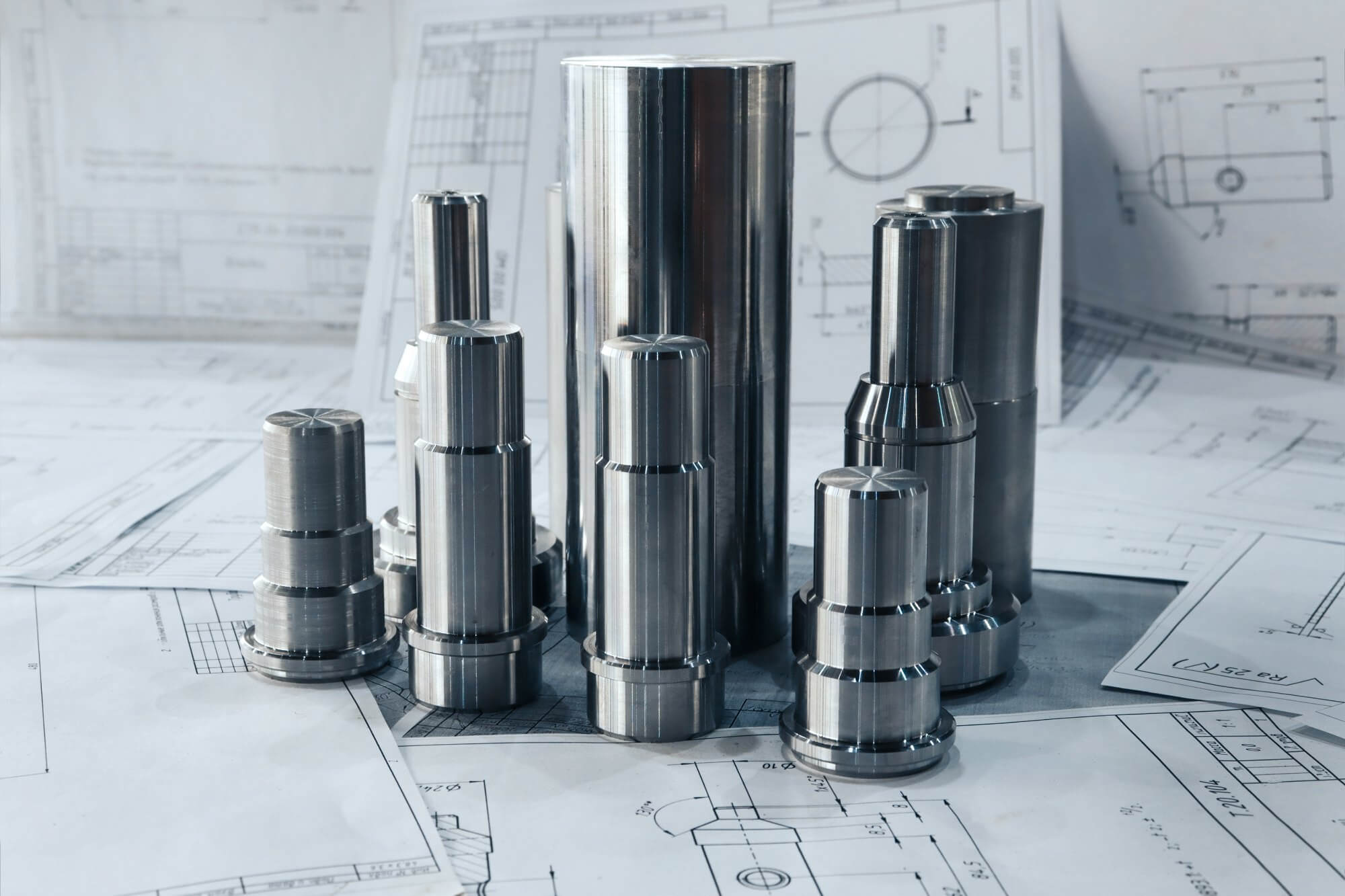Introduction to the CNC machined aluminium parts design guide
Welcome to our tailor-made design guide for CNC machined aluminium parts. Computer numerical control (CNC) machining has revolutionised the manufacturing industry by enabling the precise and efficient manufacture of complex parts.
This guide aims to provide you with the essential insights and practical considerations for designing aluminium parts optimised for the CNC machining process.
Aluminium is renowned for its light weight, corrosion resistance and excellent thermal conductivity, making it a widely used material across a variety of industries including aerospace, automotive and electronics.
When CNC machined aluminium parts, careful attention to design detail can significantly impact the quality, accuracy and cost-effectiveness of the final product.
In this guide, we will delve into key design principles, material properties, machining capabilities and best practices, enabling you to create designs that seamlessly translate into high-quality CNC machined aluminium parts.
Whether you are an experienced engineer, designer or new to the world of CNC machining, this guide will provide you with valuable knowledge to optimise your CNC machined aluminium designs.
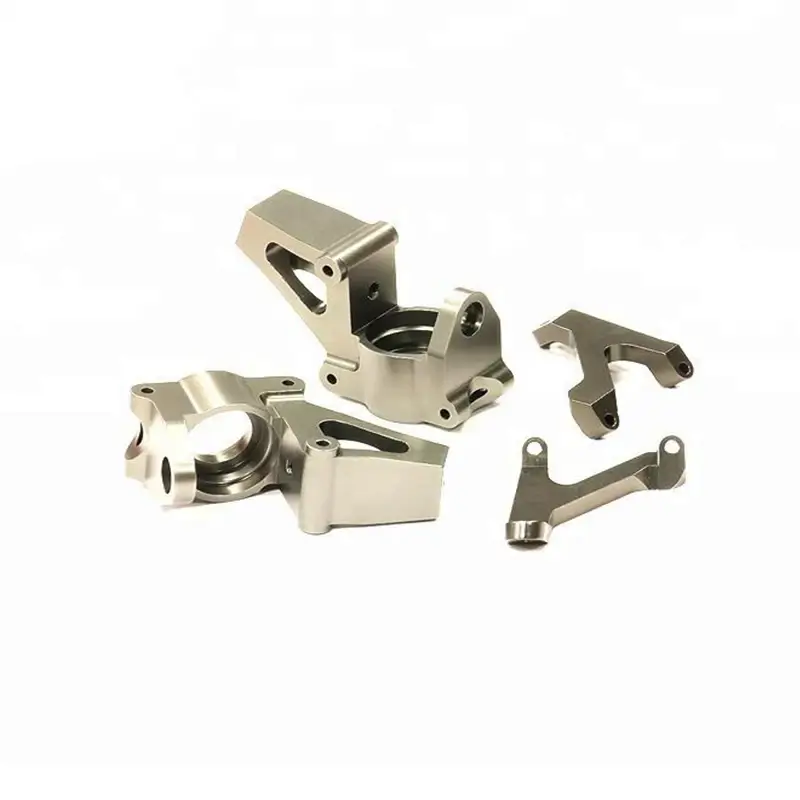
1.The importance of proper design and manufacturing considerations
In the modern world of manufacturing, the synergy between design and manufacturing is vital. Successful outcomes in terms of product functionality, quality, cost-effectiveness, and time to market depend on the careful integration of design and manufacturing considerations.
This synergy is particularly important in CNC machining, as complex designs need to be translated into tangible products. Let’s take a deeper look at why proper design and manufacturing considerations are critical:
- Optimizing Functionality: Proper design and manufacturing considerations ensure that the final product not only meets its intended purpose, but does so efficiently. Design decisions impact factors such as structural integrity, performance, and usability. If a design is well thought out and made with manufacturing in mind, it can be tailored to take advantage of the strengths of the chosen manufacturing process, thereby enhancing the overall functionality of the product.
- Manufacturability: A design that looks impressive on paper may not translate seamlessly to production. Considering manufacturability during the design phase avoids costly modifications later on. By considering factors such as material properties, machining processes, tooling accessibility, and assembly requirements, you can create designs that can be manufactured accurately and consistently.
- Reducing Lead Time: Integrating design and manufacturing considerations early on streamlines the entire production process. A well-designed part is easier to machine because it minimizes the need for complex setups, reduces tool changes, and optimizes tool paths. This can reduce lead times and speed up turnaround time from design to finished product.
- Quality and consistency: Thoughtful design aligns with the capabilities of the manufacturing process, which improves the consistency and quality of the final product. Proper design and processing considerations reduce the likelihood of defects such as tool marks, burrs, and dimensional inaccuracies that can affect product quality.
- Cost efficiency: Design decisions directly impact manufacturing costs. Overly complex designs increase production expenses by increasing material waste, processing time, and tool wear. Through design efficiency and ease of manufacturing, you can minimize costs while maintaining product integrity.
- Innovation and creativity: Collaboration between design and manufacturing teams can promote innovation. When both parties share insights and challenges, new solutions that utilize cutting-edge technologies, materials, and processes emerge. Creative problem solving can increase the competitive advantage of products.
- Minimize iterations: Solving potential problems during the design phase reduces the need for iterative changes. This saves time and avoids problems during the production phase. It makes the process from design verification to manufacturing execution smoother.
- Cross-functional communication: Encouraging communication and collaboration between designers and manufacturing experts helps to gain a comprehensive understanding of the entire product development process. This synergy promotes learning, knowledge sharing and the development of all-round skills among team members.
In the field of CNC machining, where precision and complexity dominate, the bridge between design and manufacturing is particularly important. Taking appropriate design and manufacturing considerations helps to achieve the perfect combination of creativity, technical feasibility and efficient production, thereby producing high-quality products that are cost-effective, reliable and timely. By emphasizing this integration, manufacturers and designers can work together to push the boundaries of modern manufacturing.
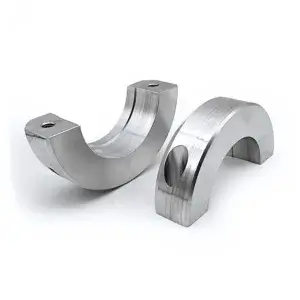
2.Advantages and Challenges of CNC Machined Aluminium Parts
Due to the unique properties and characteristics of aluminum materials, CNC machining aluminium parts have a unique set of advantages and challenges. Understanding these aspects is essential to achieve successful and efficient CNC machining results.
The following are the advantages and disadvantages of CNC machined aluminium parts:
1) Advantages:
- Lightweight: Aluminum is a popular choice for applications where weight reduction is crucial due to its low density. The processed aluminum parts help reduce the overall weight of the product, especially in industries such as aerospace and automotive.
- High thermal conductivity: Aluminum has excellent thermal conductivity and can effectively dissipate heat. This property is very beneficial in applications where thermal management is critical, such as electronic components and heat sinks.
- Corrosion resistance: Aluminum naturally forms a protective oxide layer on the upper surface of the metal, which is corrosion resistant and avoids corrosion.
- Machinability: Aluminum is generally considered to be an extremely machinable material. It can be efficiently cut, drilled, milled and formed by various machining processes, which can shorten production lead times.
- Good surface finish: Because aluminum is soft and ductile, machining aluminum can achieve a smooth surface finish. This property is very beneficial for parts that require aesthetics or tight tolerances.
- Electrical conductivity: Aluminum’s electrical conductivity makes it suitable for applications involving electrical connections or grounding, such as electronic housings and connectors.
2) Disadvantages:
- Material softness: The softness of aluminum helps achieve a smooth surface finish, but it also leads to increased tool wear and the risk of deformation during machining. Specialized tools and cutting strategies are usually required to counteract these effects.
- Sticky chips: Aluminum produces sticky chips that adhere to the cutting tool, which can affect machining accuracy and surface finish.
- Work Hardening: Some aluminum alloys will work harden during machining, causing increased tool wear and reducing cutting efficiency over time.
- Thermal Expansion: Aluminum has a relatively high coefficient of thermal expansion, and heating of the material during machining can cause dimensional changes. Compensating for thermal expansion is important to maintain accurate dimensions.
- Material Diversity: Aluminum alloys come in a variety of compositions, each with unique properties. Material diversity affects machinability, surface finish, and tool life. Material selection should consider the characteristics of specific alloys.
- Tool Wear: The abrasive nature of aluminum accelerates tool wear, requiring frequent tool changes and potentially increasing production costs. Using high-quality tool materials and coatings can extend tool life.
- Chip Control: Managing the chips generated during aluminum machining is critical to preventing chip accumulation, tool damage, and surface finish issues. Proper chip evacuation systems and strategies are necessary.
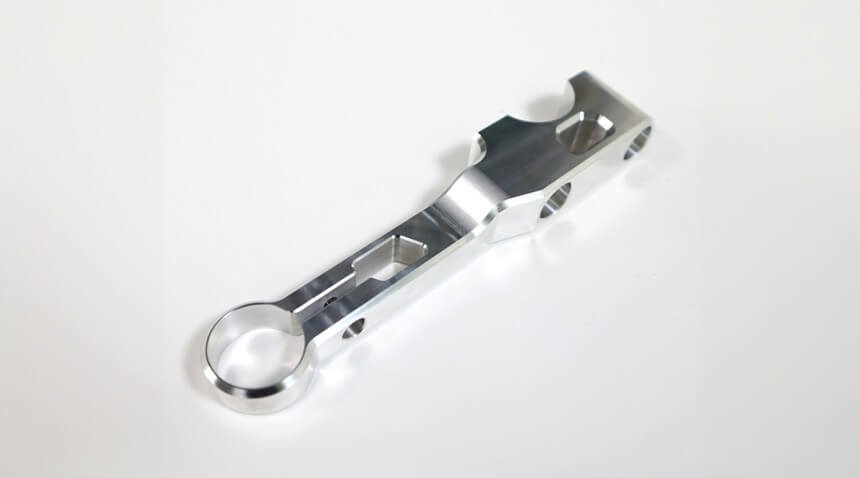
3.Key Considerations for CNC Machining Design Guidelines
When designing CNC machined parts, especially CNC machined aluminium production, several key factors must be considered to ensure successful and efficient manufacturing.
The following are key design guide considerations for optimizing your CNC machining process:
1) Manufacturing Tolerances
Designing within the proper manufacturing tolerances is critical to achieving accurate and consistent results.
Tolerances define the allowed variation in a specified dimension and ensure that parts will function and fit together correctly.
It is important to work closely with your CNC machining supplier to understand their capabilities and recommended tolerances for different features.
2) Cavities and Pockets
Considerations such as tool access, tool diameter, and material removal are important when designing cavities and pockets in CNC machined parts.
Avoid small corners, as these can be difficult to machine accurately. Provide adequate tool clearance and consider increasing draft angles to help remove the part from the mold.
3) Internal Edges and Radiuses
Internal edges and radii have an impact on the strength, aesthetics, and ease of manufacturing of a part. Sharp internal corners can cause stress concentrations and machining difficulties. Adding fillets or radii to internal edges can improve part durability and enhance machining efficiency.
4) Thin walls and structures
Thin walls and structures are susceptible to vibration and deflection during machining, making them difficult to machine accurately. When designing thin walls, consider the stiffness of the material and the machining forces. Reinforce them with ribs or supports to improve stability and prevent deformation.
5) Holes, threads, and undercuts
Hole and threads require careful consideration to ensure proper alignment, size, and depth. For internal threads, consider using standard thread sizes to facilitate tooling and reduce complexity. Undercuts are features that prevent direct access by the cutting tool and should be minimized or avoided as they complicate machining.
4.Material selection for CNC machined aluminium parts
1) Factors affecting material selection
Choosing the right material for CNC machined aluminium parts is a critical decision that affects the performance, manufacturability, and overall cost of the part. Several factors influence material selection to ensure that the selected material meets the specific requirements of the application. These factors include:
- Mechanical properties: Consider the strength, hardness, toughness, and other mechanical properties required for the part. Different aluminum alloys have different levels of these properties.
- Corrosion resistance: Evaluate the environment to which the part will be exposed. Aluminum’s natural oxide layer offers some corrosion resistance, but some alloys offer enhanced corrosion protection.
- Thermal conductivity: If the part will be exposed to heat or need to dissipate heat, consider the thermal conductivity of the aluminum alloy. High thermal conductivity is beneficial for heat sinks and parts that require thermal management.
- Electrical conductivity: Some applications require electrical conductivity. Different aluminum alloys have different electrical conductivity, so choose on a case-by-case basis.
- Machinability: Consider how easy the selected aluminum alloy is to machine. Alloys with good machinability reduce tool wear and machining time, which can save costs.
- Aesthetics and surface finish: If the appearance of the part is important, consider finishing, anodizing, or coating the material to achieve the desired aesthetics.
- Cost: Raw material costs can impact the overall project budget. Balancing material quality and cost-effectiveness is critical.
- Availability: Make sure the supplier can readily supply the selected aluminum alloy to prevent production delays.
- Regulatory Compliance: Some industries have specific regulations or standards for material selection
2) Common Aluminum Alloys for CNC Machining
Due to their excellent properties, a variety of aluminum alloys are commonly used in CNC machining. Here is a list of the most common alloys:
- 6061-T6: This versatile alloy has good strength, corrosion resistance, and machinability. It is commonly used for a variety of CNC machined parts, including structural components and accessories.
- 7075-T6: 7075-T6 is known for its high strength and excellent fatigue resistance and is used in applications that require excellent structural integrity, such as aerospace components and high-performance equipment.
- 2024-T3: 2024-T3 has good machinability and a high strength-to-weight ratio, suitable for applications such as aircraft structures that require high weight reduction and high durability.
- 5052-H32: This alloy has good corrosion resistance and formability. It is often used for parts that require complex shapes and medium strength, such as sheet metal components.
- 6063-T5: 6063-T5 is often used for extruded shapes and has a good surface finish for applications such as architectural profiles and framing.
- 6082-T6: Similar to 6061-T6, this alloy has excellent machinability and is widely used in CNC machining applications, including structural parts and accessories.
Remember that the specific requirements of your project will determine the most appropriate aluminum alloy. Considerations such as mechanical properties, corrosion resistance, and thermal characteristics should guide your material selection process to ensure optimal performance and cost-effectiveness.
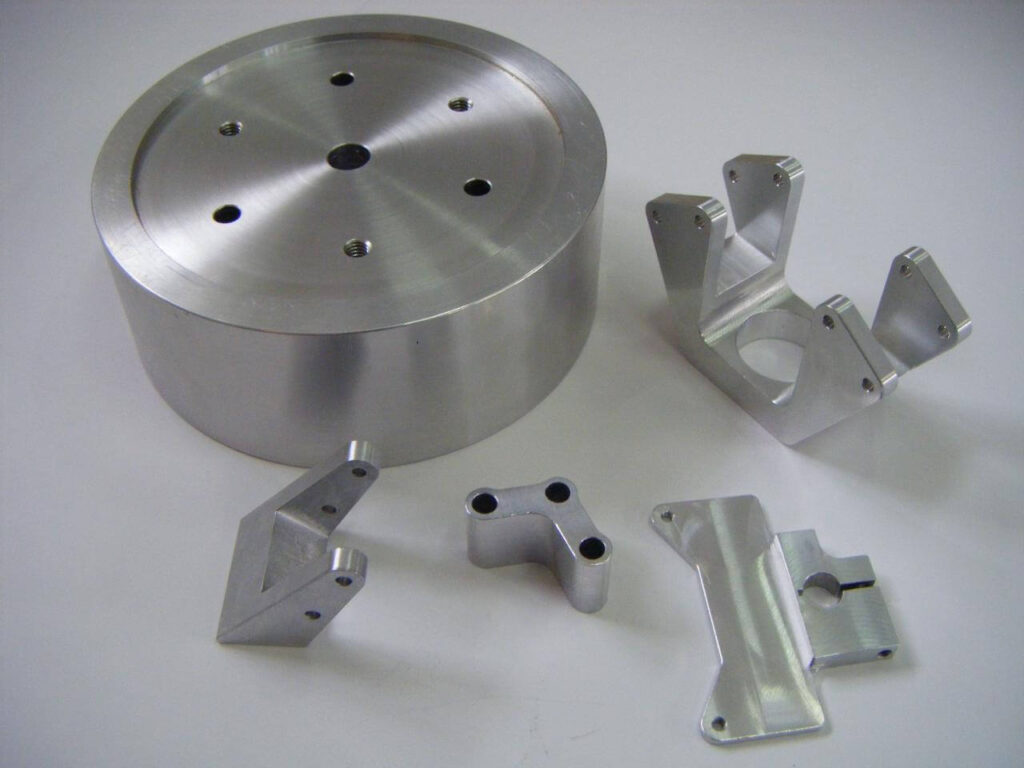
5.Manufacturing processes for CNC machined aluminium parts
CNC machined aluminium parts cover a wide range of processes for precision forming and manufacturing aluminium parts. Let’s explore some of the key manufacturing processes used in CNC machined aluminium parts.
1) Milling and turning
- Milling: Milling is the process of removing material from a workpiece using a rotating tool. In aluminium CNC machining, milling is often used to create complex shapes, features and grooves. To achieve specific geometries and surface qualities, a number of milling techniques can be used, including face milling, end milling and profile milling.
- Turning: Turning is the process of rotating a workpiece while removing material with a cutting tool to produce a cylindrical shape. In aluminium machining, turning is used to create cylindrical features such as shafts, threads and concentric surfaces. It is particularly suitable for producing circular or symmetrical components.
2) High speed machining
High speed machining (HSM) is a process that uses faster spindle and feed speeds to remove material quickly. In aluminium CNC machining, HSM exploits the relatively low hardness of the material to achieve rapid material removal rates. This technology can effectively reduce machining time and increase productivity while maintaining accuracy.
3) Multi-axis machining
To create complex shapes and contours, multi-axis machining involves moving multiple axes simultaneously. Multi-axis machines can perform complex operations with just one setup when cutting aluminum, minimizing the need to move the workpiece.
Common multi-axis configurations include 3-axis, 4-axis and 5-axis machining, with 5-axis providing the greatest flexibility for creating complex geometries and contours.
6.CNC machined aluminium parts Advantages of each process
- Milling and turning: These processes are versatile and can manufacture parts of a wide range of geometries, from simple to complex. They can be used for both internal and external features and are ideal for producing parts with rotational symmetry.
- High-speed machining: Due to the softness of aluminum, HSM is ideal for aluminum machining. It removes material quickly without causing excessive tool wear, thereby reducing machining time and increasing productivity.
- Multi-axis machining: Multi-axis machines are used to manufacture complex shapes. They reduce the need for multiple setups, improve accuracy and reduce production time for parts with complex geometries.
Things to note: - Material properties: The properties of aluminum, such as its low hardness and thermal conductivity, influence tool selection and cutting parameters in each machining process.
- Tools: Selecting the right tool material, coating, and geometry is critical to achieving effective and precise machining results.
- Machine capabilities: The capabilities of the CNC machine, including spindle speed, feed rate, and available axes of motion, determine the feasibility of different machining processes.
- Part complexity: The complexity of the part geometry and required features influences the choice of machining process. More complex parts may benefit from multi-axis machining.
By understanding the advantages and applications of milling, turning, high-speed machining, and multi-axis machining, manufacturers can select the most appropriate aluminum CNC machining process. This ensures that parts are accurately manufactured, meet design specifications, and are produced efficiently.
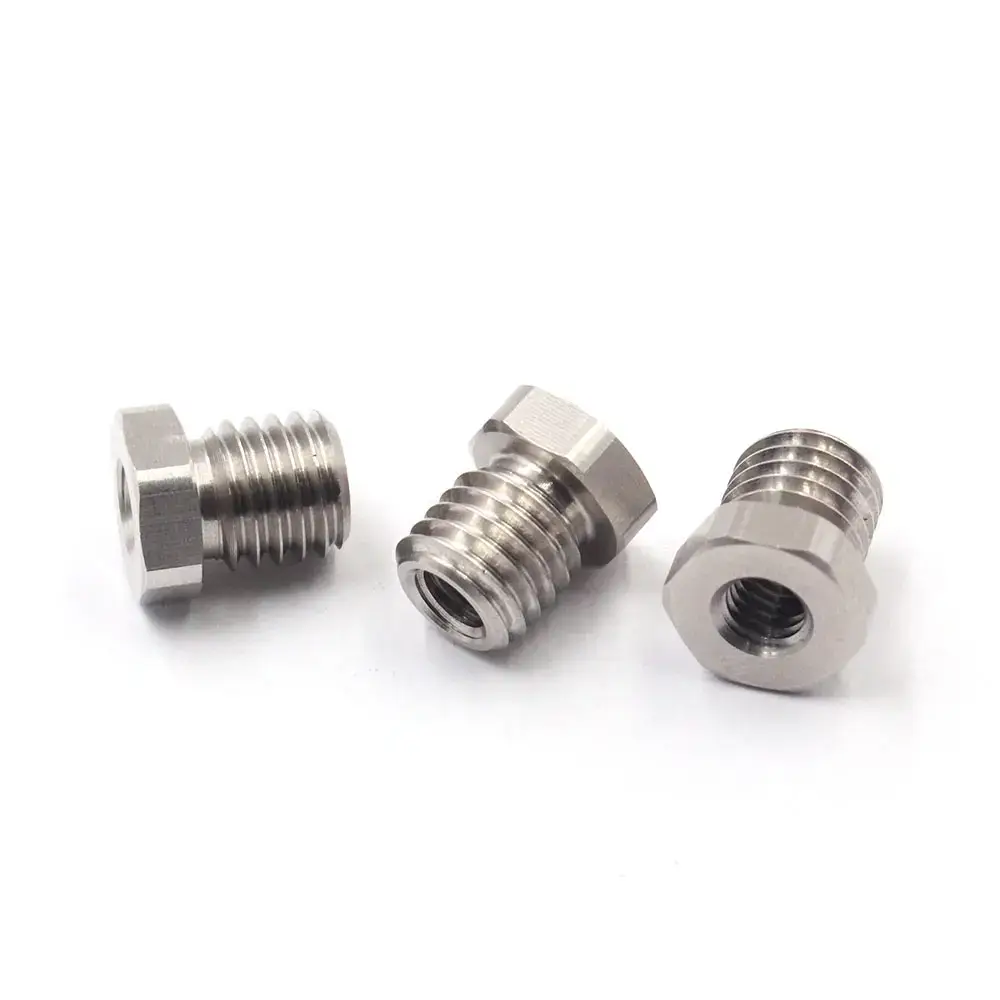
7.Surface treatment options for CNC machined aluminium parts
1) The role of surface treatment
An important aspect of the CNC machining process for aluminum parts is surface treatment. Machining can shape the geometry of the part, while surface treatment can enhance its appearance, function, and durability. The right surface treatment techniques are not only aesthetically pleasing, but they can also improve corrosion resistance, wear resistance, and other performance characteristics.
Here are the reasons why surface treatment is so important:
- Aesthetic Appeal: Surface treatment enhances the visual appeal of CNC machined aluminium parts, making them more attractive and professional looking.
- Corrosion Resistance: Aluminum is corrosion resistant due to the oxide layer that naturally forms on the metal surface. Surface treatment methods can further enhance this protection, extending the life of the part in corrosive environments.
- Wear Resistance: Certain surface treatment techniques, such as anodizing, hard anodizing, and coatings, can improve the wear resistance of parts, making them suitable for applications with high friction or abrasive conditions.
- Improved Lubrication: Certain surface treatments, such as coatings and plating, can provide improved lubrication properties, reducing friction and wear on moving parts.
- Electrical Conductivity: Anodizing and other surface treatments can maintain the material’s electrical conductivity while adding other beneficial properties.
- Thermal Management: Thermal coatings and surface treatments can enhance the part’s ability to dissipate heat, making it suitable for applications where thermal management is critical.
2) Popular Aluminum Processing Techniques
A variety of surface finishing techniques are commonly used for CNC machined aluminium parts. Here are some popular aluminum processing techniques:
- Anodizing: Anodizing is an electrochemical process that applies a protective oxide coating to the surface of aluminum. Anodizing enhances aluminum’s corrosion resistance, provides a long-lasting, durable surface, and can be dyed in a variety of colors.
- Chemical Conversion Coating: Chemical conversion coatings, such as chromate or phosphate coatings, provide corrosion resistance, paint adhesion, and improved conductivity.
- Electroplating: Electroplating is the deposition of a layer of metal on the surface of aluminum. Common electroplatings include nickel, chromium, and zinc, which enhance aluminum’s durability, aesthetics, and resistance to certain environmental conditions.
- Paint and Powder Coating: Paint and powder coating offer a variety of colors and finishes while providing protection from corrosion, UV rays, and other environmental factors.
- Brushed and Polished Surface Finishes: Mechanical finishing techniques such as brushing and polishing can produce textured or reflective surfaces that enhance the beauty of a part.
- Sandblasting: Sandblasting involves spraying tiny beads onto the surface of aluminum to create a matte texture. It is often used to improve paint adhesion or create a uniform appearance.
- Clearcoat: Clear protective coatings, such as clear lacquers or sealants, preserve the natural appearance of aluminum while providing a layer of protection against oxidation and environmental factors.
- Specialty Coatings: Depending on the application, specialty coatings such as thermal barrier coatings or self-lubricating coatings may be applied to achieve specific performance characteristics.
Selecting the right surface treatment technology requires consideration of factors such as intended use, aesthetics, environmental conditions, and performance requirements. Each technology has its own unique advantages, and manufacturers often work closely with designers to select the most appropriate surface treatment for their CNC machined aluminium parts.
8.Optimise the cost and efficiency of CNC machined aluminium parts
1) Design for manufacturability
Design for manufacturability is a key strategy for optimising the cost and efficiency of aluminium CNC machining. This approach involves creating designs that are not only functional and aesthetically pleasing, but also consider the practical aspects of the manufacturing process.
Here is how Design for Manufacturability can help achieve cost-effective CNC machining
- Simplify geometry: Complex designs can lead to longer machining times, increased tool wear and increased costs. Simplifying geometry, minimising sharp angles and reducing unnecessary features can simplify the machining process.
- Material selection: Choose a readily available and affordable aluminium alloy that is suitable for your specific application. Avoid rare or hard-to-source alloys that may increase material costs.
- Standard tooling: Designing parts that can be machined using standard tools and tool sizes can significantly reduce tooling costs. Custom tooling can be expensive and may not always be necessary.
- Minimise tool changes: Designing parts that can be machined with a minimum number of tool changes can help reduce setup time and improve overall machining efficiency.
- Avoid overcutting: Overcutting occurs when a feature being machined is larger than the required size. Precise design minimizes overcutting, saving material and machining time.
- Optimal Tolerances: Specify the tolerances required for the function of the part. Tighter tolerances often require more precise machining, which increases costs.
- Assembly Considerations: Design parts that are easy to assemble without complex jigs, fixtures, or additional machining steps. Simplifying the assembly process reduces overall production time and cost.
- Prototyping and Iteration: Test your ideas with rapid prototyping before going into full production. This minimizes the risk of costly design errors and modifications during CNC machining.
2) Balancing Performance and Cost
Balancing performance and cost is a subtle but important aspect of aluminum CNC machining. While it is important to manufacture high-quality parts with optimal performance, it is equally important to effectively manage costs.
Here is how to achieve this balance:
- Material Optimization: Select the right aluminum alloy based on the required mechanical properties, corrosion resistance, and thermal conductivity. Choose a balance that meets performance needs without overspecifying the material.
- Efficient Tooling: Invest in high-quality equipment that balances performance and price. Tools that last longer and have optimized cutting geometry can save costs in the long run.
- Machining strategies: Choose machining strategies that optimize tool paths, minimize idle time, and reduce tool changes. High-speed machining and multi-axis milling can improve efficiency without compromising quality.
- Batch production: Consider batch production of parts with similar geometries. Batch machining can reduce setup time, improve consistency, and reduce the cost per part.
- Value engineering: Continuously review design and manufacturing processes to identify opportunities for cost savings without compromising performance. This involves revisiting materials, tolerances, and manufacturing techniques.
- Supplier relationships: Build strong relationships with material suppliers and CNC machining service providers. Bulk purchasing and long-term partnerships can result in cost discounts and reduced lead times.
- Feedback loops: Maintain open communication between design and manufacturing teams. Feedback from machinists can provide insights into design changes that can improve efficiency and reduce costs.
By adopting design for manufacturability principles and striking the right balance between performance and cost, manufacturers can achieve the best results in CNC machined aluminium parts. These strategies not only help with efficient production, but also ensure that the final part meets quality standards, functional requirements and customer expectations, while minimizing expenses.
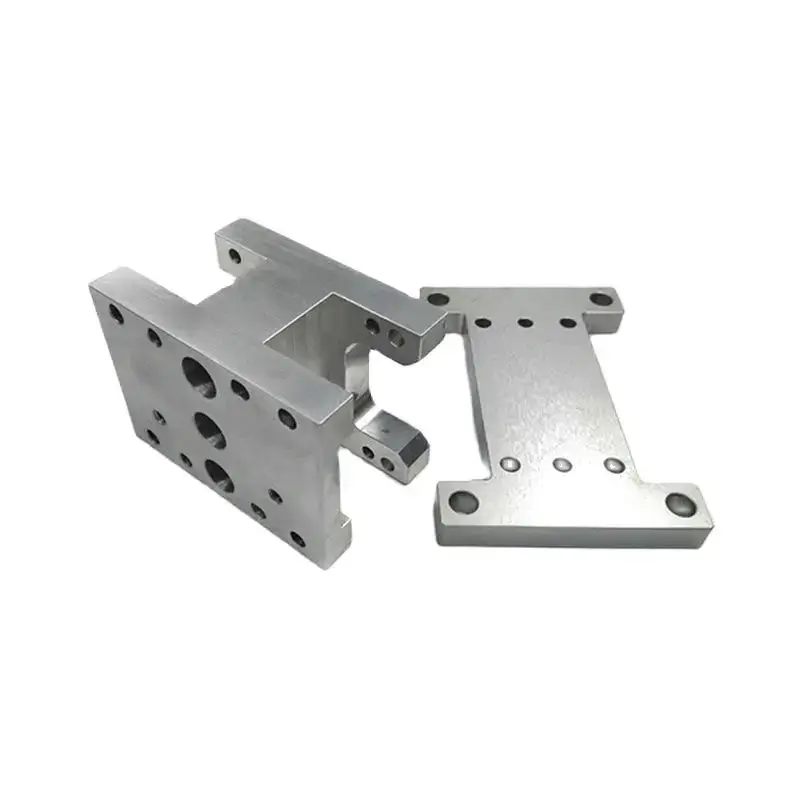
9.Quality Control and Inspection in CNC Machined Aluminium Parts
1) Importance of Quality Assurance
Quality assurance is a key aspect of CNC machined aluminium parts, ensuring that the final product meets the required accuracy, functionality and reliability standards. In a CNC machining environment where precision is critical, quality control plays a vital role for both manufacturers and customers.
Here is why quality assurance is so important:
- Product Reliability: High-quality CNC machined aluminium parts are more likely to perform reliably and continuously over their expected service life. Quality assurance minimizes the risk of defects, premature failures and costly recalls.
- Customer Satisfaction: Providing parts that meet or exceed customer expectations enhances trust and satisfaction. Consistently delivering high-quality products enhances a manufacturer’s reputation and encourages repeat business.
- Compliance: Many industries have strict regulatory standards and requirements. Quality control ensures that CNC machined aluminium parts meet these standards, avoiding legal or regulatory complications.
- Cost savings: Identifying and resolving quality issues early in the production process reduces rework, scrap, and expensive corrective actions. Effective quality assurance helps improve overall cost efficiency.
- Process optimization: Quality control provides insight into machining processes, tooling, and material performance.
- Continuous improvement: Implementing quality control fosters a culture of continuous improvement. By monitoring and analyzing results, manufacturers can identify trends, address root causes, and improve their operations over time.
2) Inspection and testing processes
Inspection and testing are integral to aluminum CNC machining quality control. These processes help identify deviations from specifications and ensure that only parts that meet predetermined standards are approved for use.
Here are some common inspection and testing processes:
- Dimensional inspection: Precision is a top priority in CNC machining. Dimensional inspection requires comparing part dimensions to design specifications using calibrated measuring tools such as micrometers, calipers, and coordinate measuring machines (CMMs).
- Surface finish evaluation: CNC machined aluminum parts often require a specific surface finish to meet functional or aesthetic requirements. Surface roughness and finish quality can be assessed by instruments such as profilometers and visual inspection.
- Visual Inspection: Visual inspection is performed to identify any visual defects such as surface scratches, tool marks, burrs or irregularities. This inspection helps ensure that the part meets aesthetic and functional requirements.
- Hardness Testing: Depending on the application, hardness testing can be performed to verify the mechanical properties of the part. Instruments such as hardness testers assess the hardness of the material to ensure it meets specifications.
- Assembly Fit and Tolerance Checks: Machined parts often need to fit precisely with other components. Assembly inspection verifies that the parts fit as expected and that tolerances are maintained.
- Material Analysis: Material composition is critical for aluminum alloy CNC machined parts. Spectroscopy and other material analysis techniques can confirm that the materials used match the specified alloy.
- Functional Testing: For more complex parts, functional testing may be required to ensure that the part performs its intended function. This may involve simulation, load testing, or other performance evaluations.
- Documentation and Traceability: Quality control involves maintaining accurate documentation of inspections, tests, and results. These documents ensure traceability and help manufacturers resolve any issues that arise.
In summary, quality control and inspection processes are an integral part of CNC machined aluminium parts. By implementing rigorous quality assurance practices and utilizing advanced inspection and testing techniques, manufacturers can produce reliable, accurate and highest quality CNC machined aluminium parts.
10.Importance of CNC machining design guidelines in CNC machined aluminium parts production
1) Key points for designers and manufacturers
The CNC machining design guide, tailored for CNC machined aluminium parts production, is a valuable resource that provides several key points for designers and manufacturers:
- Guiding the design process: The guide provides a structured approach to designing aluminium parts, providing insights into optimal geometry, tolerances and material considerations.
- Optimizing material usage: By following the guide’s recommendations for wall thickness, fillets and features, designers can maximize material efficiency. This minimizes waste and reduces material costs while maintaining part integrity.
- Improving product quality: Following the design guide ensures that part designs are accurately and consistently machined. This improves product quality, reduces defects and improves overall performance.
- Cost-effective manufacturing: Designing parts according to the principles of the guidelines allows for efficient machining, which reduces machining time, tool wear, and overall production costs.
- Reduced time to market: Well-designed parts allow for smoother manufacturing processes and shorter lead times. This results in shorter product development cycles and faster time to market.
- Reduced iterations: Guidelines help identify potential design issues early, minimizing the need for iterations and design revisions during production. This saves time, resources, and avoids delays.
- Informed decisions: Designers can make informed decisions about material selection, machining strategies, and finishing options based on the guidance provided. This allows for better choices that meet project goals.
2) Impact of design and manufacturing considerations
The impact of design and manufacturing considerations in CNC machined aluminium production is far-reaching:
- Manufacturability: Designs that take into account manufacturing processes and constraints are easier to produce accurately and efficiently. Considering factors such as tool access, machining sequence, and material properties ensures successful manufacturing.
- Cost-effectiveness: Poorly designed parts lead to increased machining time, excessive tool wear, and material waste, all of which lead to increased production costs. Design for manufacturability helps minimize these expenses.
- Precision and quality: Design decisions affect the dimensional accuracy, surface finish, and overall quality of the final product.
- Production speed: Efficiently designed parts can be machined quickly with minimal tool changes and setups. This speeds up production time, allowing manufacturers to meet tight deadlines.
- Resource utilization: When parts are designed for optimal material usage and machining efficiency, manufacturers can make the best use of available resources, whether it is raw materials, machining equipment or labor.
- Collaboration and expertise: Collaboration between design and manufacturing teams promotes the development of cross-functional expertise. Designers gain insight into the production process and machinists understand the design intent, allowing them to solve problems more effectively.
- Risk reduction: Addressing potential challenges early in the design phase reduces the risk of errors, rework, and project delays. This helps make the production process smoother and the results more predictable.
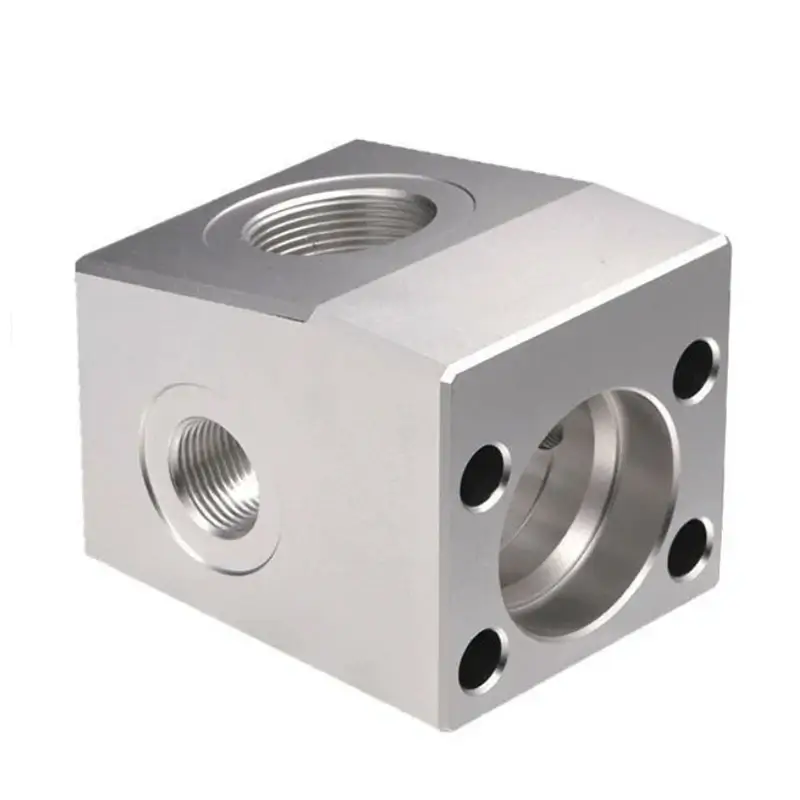
11.Conclusion
In summary, the design and manufacture of CNC machined aluminium parts requires a comprehensive understanding of key considerations. From material selection to geometric complexity, structural integrity, and surface finish, each aspect plays a critical role in achieving optimal performance and functionality.
Balancing these factors while leveraging the precision and versatility of CNC machining ensures the manufacture of high-quality aluminum parts that meet the stringent requirements of a variety of industries. As technology evolves, keeping up with advances in CNC technology and software will further increase the efficiency and effectiveness of producing first-class aluminum parts.
